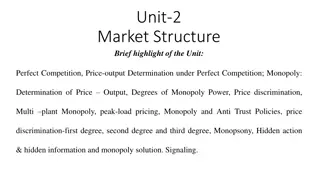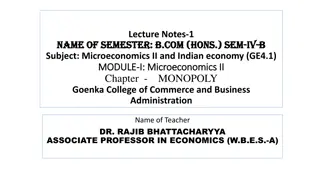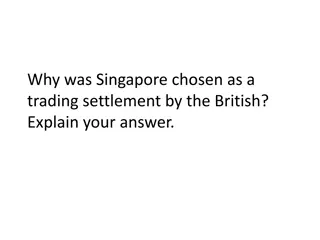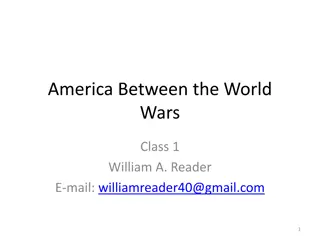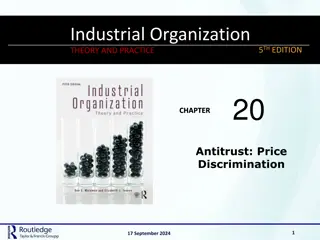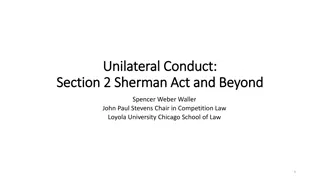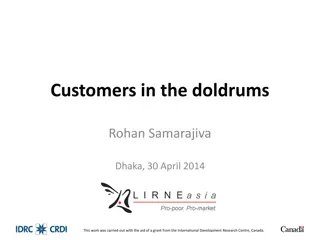
Understanding Monopoly Markets: Characteristics and Impacts
Learn about Monopoly markets - where a single firm dominates, controls pricing, and limits competition. Explore the characteristics of Monopoly, the implications of sole firm control, pricing biases, entry constraints, and more.
Download Presentation

Please find below an Image/Link to download the presentation.
The content on the website is provided AS IS for your information and personal use only. It may not be sold, licensed, or shared on other websites without obtaining consent from the author. If you encounter any issues during the download, it is possible that the publisher has removed the file from their server.
You are allowed to download the files provided on this website for personal or commercial use, subject to the condition that they are used lawfully. All files are the property of their respective owners.
The content on the website is provided AS IS for your information and personal use only. It may not be sold, licensed, or shared on other websites without obtaining consent from the author.
E N D
Presentation Transcript
Monopoly Monopoly is one of the extreme imperfect markets amongst Monopoly, Monopolistic Competition and Oligopoly as it lacks several characteristics of perfect competition and it exists where a single firm rules the industry. The word Monopoly is a combination of two words in which mono implies single and poly means seller . Therefore, the market controlled by a sole trader is said to a Monopoly market.
Characteristics of Monopoly The following are some of the characteristics of Monopoly:
Characteristics of Monopoly Sole Firm/ Trader - Monopoly market is solely captured by an individual seller or firm of a particular commodity having no competitors in the market, the whole output of such commodity depends upon that firm or trader; thus they form industry with a Monopoly. Cost determiner - As the Monopolist is the sole king of that industry, he also determines the cost of the commodity produced, and there is no one in the market as a competitor who can challenge his price and the value decided by him becomes the final price of that product to sell in the market. Price Bias - As the monopolist is a sole trader of that commodity in the whole market, he may be biased amidst customers, i.e., can charge more from rich and low from poor customers. Optimum Production - Production in the Monopoly market should be in optimum scale as supply rise may bring fall in the price of the product.
Characteristics of Monopoly No substitute products - The monopoly firm or trader captures an entire market of the product as they have the patent of that product; thus, no substitute products can be produced and sold in the market by other firms. Entry constraints - Entering in the Monopoly market is restricted for the firms as the monopolist has captured the market with his specialities, hence other firms cannot compete with them, and for the Monopoly firm it is obligatory to have a patent for surviving in the market. Stability of production elements - All the elements of the production are not always movable, which becomes one of the essential components behind the monopolist command on such resources. No one can copy such factors or combination for the production, and hence chances of deposing monopolist become negligible. Precise Knowledge and profit maximization - The monopolist learns perfectly about the market conditions to avoid the uncertainties of the future, and their main aim is to maximize the profits of the firm.




